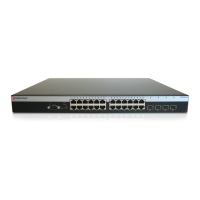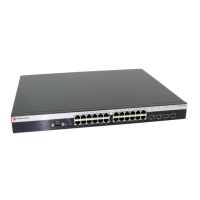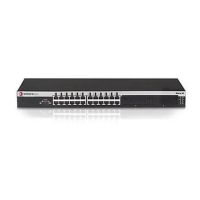Configuring PIM-SM
19-22 Configuring Multicast
Basic PIM-SM Configuration
By default, PIM-SM is disabled globally on Enterasys fixed switches and attached interfaces.
Basic PIM-SM configuration includes the following steps:
1. Creating and enabling VLANs with IP interfaces.
2. Configuring the underlying unicast routing protocol (for example, OSPF).
3. Enabling IGMP on the device and on the VLANs.
4. Configuring PIM-SM on the device and on the VLANs.
Procedure 19-4 assumes the following:
• VLANs have been configured and enabled with IP interfaces.
• The unicast routing protocol has been configured.
• IGMP has been enabled on the devices and VLANs that will be connected with hosts. For
information on enabling IGMP, see “Configuring IGMP” on page 19-15.
Procedure 19-4 describes the basic steps to configure PIM-SM on stackable C3 and C5 devices and
standalone G-Series devices.
)))))
Example Configuration
Figure 19-6 illustrates a PIM-SM configuration where two fixed switches are located at the edge of
the PIM-SM topology. They are used to deliver multicast streams to end users only. The following
configuration example does not include configuring Routers R2 and R3, which could be S-Series
switches. Refer to the S-Series Configuration Guide for more information.
Procedure 19-4 Basic PIM-SM Configuration
Step Task Command(s)
1. In global configuration mode, enable PIM-SM on
the device.
ip pimsm
2. In global configuration mode, if desired, create a
manual RP IP address for the PIM-SM router.
ip pimsm staticrp ipaddress groupaddress
groupmask
3. In interface configuration mode, enable PIM-SM
on the device’s VLAN interfaces that will run
PIM-SM.
ip pimsm enable

